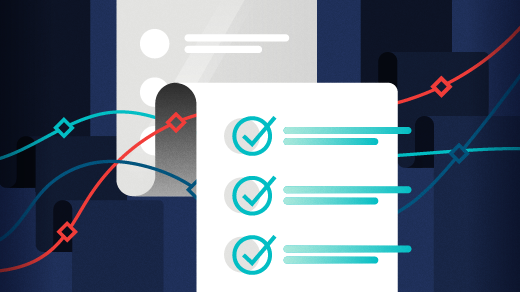In prior years, this annual series covered individual apps. This year, we are looking at all-in-one solutions in addition to strategies to help in 2021. Welcome to day 4 of 21 Days of Productivity in 2021. In this article, I'll examine a strategy for prioritizing tasks on a to-do list. To find the open source tool that suits your routine, check out this list.
It is easy to add things to a task or to-do list. Almost too easy, really. And once on the list, the challenge becomes figuring out what to do first. Do we do the thing at the top of the list? Is the top of the list the most important thing? How do we figure out what the most important thing is?

To-do. Today? Tomorrow? Who knows? (Kevin Sonney, CC BY-SA 4.0)
Much like email, we can prioritize tasks based on a couple of things, and this lets us figure out what needs to be done first and what can wait until later.
I use a method commonly known as the Eisenhower Matrix since it was taken from a quote by US President Dwight D. Eisenhower. Draw a box split horizontally and vertically. Label the columns "Urgent" and "Not Urgent," and the rows "Important" and "Not Important."

An Eisenhower Matrix. (Kevin Sonney, CC BY-SA 4.0)
You can typically put all of the things on a to-do list in one of the boxes. But how do we know what to put where? Urgency and importance are often subjective. So the first step is to decide what is important to you. My family (including my pets), my work, and my hobbies are all important. If something on my to-do list isn't related to those three things, I can immediately put it into the "Not Important" row.
Urgency is a little more cut and dry. Is it something that needs to be done today or tomorrow? Then it is probably "Urgent." Does it have a deadline that is approaching, but there are days/weeks/months until that time, or perhaps it doesn't have a deadline at all? Certainly "Not Urgent."
Now we can translate the boxes into priorities. "Urgent/Important" is the highest priority (i.e., Priority 1) and needs to be done first. "Not Urgent/Important" comes next (Priority 2), then "Urgent/Not Important" (Priority 3), and finally "Not Urgent/Not Important" (Priority 4 or no priority at all).
Notice that "Urgent/Not Important" is third, not second. This is because people spend a lot of time on things that are important because they are urgent, not because they are actually important. When I look at these, I ask myself some questions. Are these tasks that need to be done by me specifically? Are these tasks I can ask other people to do? Are they important and urgent for someone else? Does that change their importance for me? Maybe they need to be re-classified, or perhaps they are things I can ask someone else to do and remove them from my list.

After prioritizing. (Kevin Sonney, CC BY-SA 4.0)
There is a single question to ask about the items in the "Not Urgent/Not Important" box, and that is "Do these need to even be on my list at all?" In all honesty, we often clog up our to-do lists with things that are not urgent or important, and we can remove them from our list altogether. I know it is hard to admit that "This is never going to get done," but after I accept that, it is a relief to take that item off my list and not worry about it anymore.
After all that, it is pretty easy to look at my list and say, "This is what I need to work on now," and get it done, which is what my to-do list is for: Providing guidance and focus to my day.










1 Comment